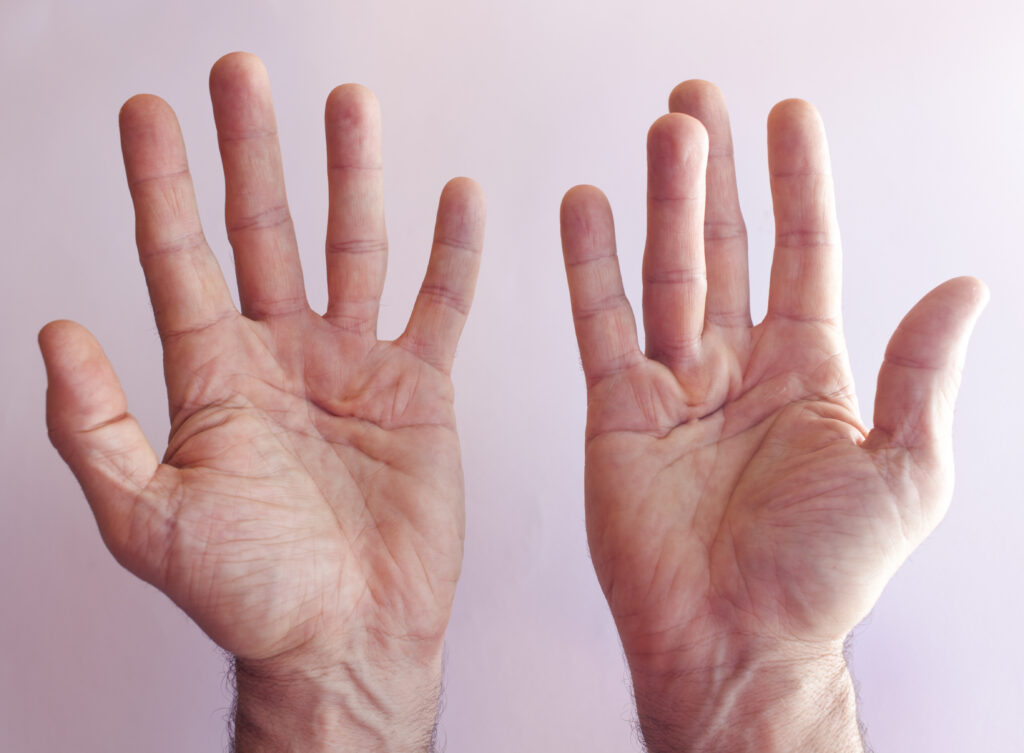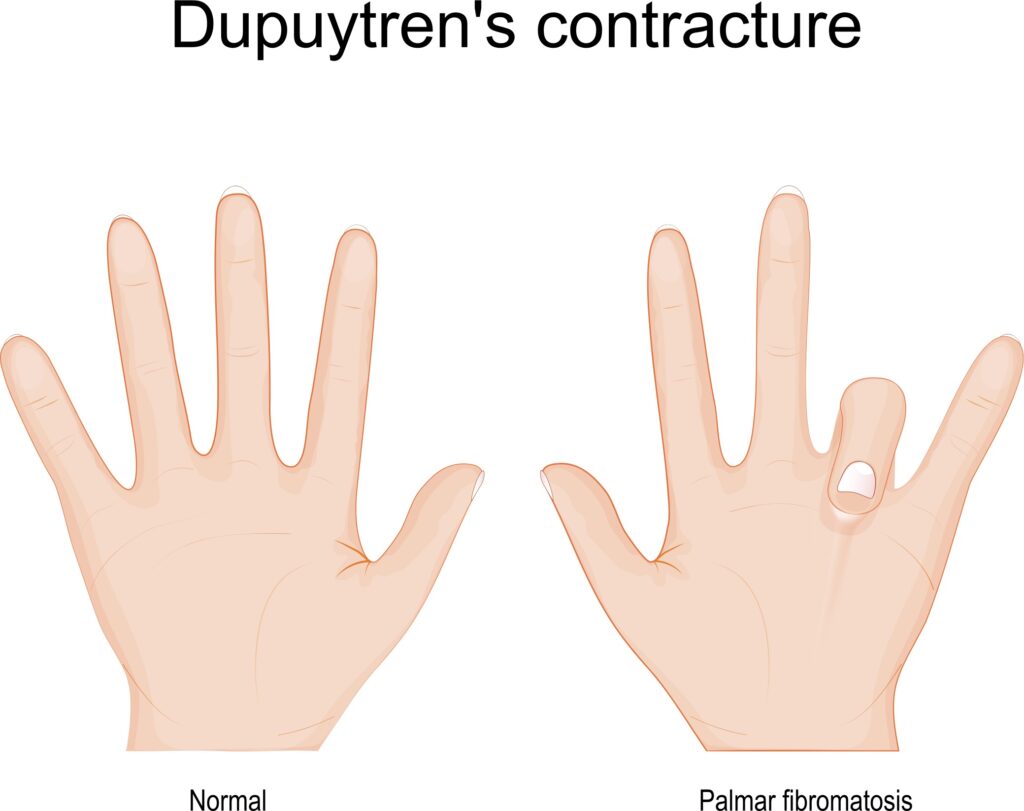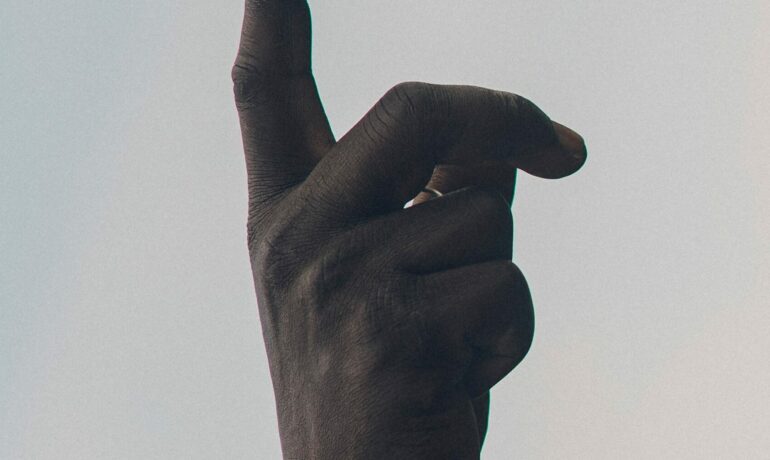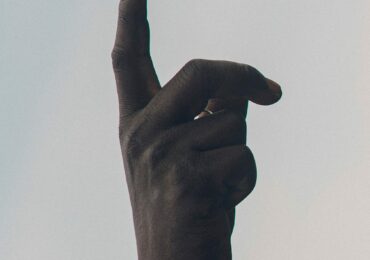Dupuytren’s contracture affects the palm and fingers. Your hands normally have fibrous tissue called fascia that covers important blood vessels, nerves, tendons, and muscles and stabilises the skin. In Dupuytren’s disease, this fibrous tissue thickens and forms cords that look like tendons. Lumps or nodules characterise Dupuytren’s contracture in the hands that may pull the fingers towards the palm, so you can’t fully open them over time. So, what causes Dupuytren’s contracture, and how can you treat it? Let’s dive in.
Who is at Risk of Dupuytren’s Disease?
You are at a higher risk of developing Dupuytren’s contracture if you are:
- Older – the disease is more common in middle-aged people and those in later stages of life.
- Male – men are more likely to develop the disorder than women. Men are also at risk of developing a severe version of the disease.
- Medical conditions – certain medical conditions like epilepsy and diabetes increase the risk.
- Alcoholism – the disorder is more common and severe in alcoholics.
What Causes Dupuytren’s Contracture?
Dupuytren’s contracture is believed to be hereditary. The exact Dupuytren’s contracture cause is, however, unknown. It may also be linked to alcoholism, cigarette smoking, nutritional deficiencies, diabetes and medications used to treat seizures.
How Does Dupuytren’s Contracture Progress?
Dupuytren’s contracture progresses slowly over the years, which is why most people don’t seek treatment in the early stages. In the earliest stages, the skin on the palm starts to thicken. As it progresses, knots or nodules of hard lumps start forming on the palm, which makes the skin appear puckered. The nodules are not usually painful but are tender to the touch. The skin thickening happens slowly, and you might not even need treatment unless the symptoms begin affecting the quality of your life.
In the later stages, the nodules gradually stretch, forming thin collagen bands that usually extend into the pinky and ring fingers. As the disease progresses, the bands tighten, pulling the fingers towards the palm. At that stage, you may not be able to straighten your fingers. Dupuytren’s contracture can affect one or both hands. If it affects both hands, one hand will usually have more severe symptoms than the other. Most people only seek treatment at the latest stages.

The nodules can be uncomfortable for some people, but most people don’t usually feel any pain. You may first notice the disorder when you can’t open your hand fully or place it flat on a surface. The disorder may make it difficult to put hands in the pocket, wash hands, hold large objects or wear gloves.
If it affects the right hand, it may feel weird when shaking hands. The progression of the disease varies from one person to another. Some people only develop small lumps, while others will have severely bent fingers. It is always advisable to see a doctor the moment you notice any symptoms.
How is Dupuytren’s Contracture Treated?
Dupuytren’s contracture treatment depends on how severe the condition is. In the early stages, treatment may involve corticosteroid injection into the fascia. The injections help reduce localised tenderness and delay tissue thickening. Surgery is the next best option in advanced cases where the disorder makes it difficult to handle certain tasks. During Dupuytren’s contracture surgery, the surgeon will make small incisions in your palm. Depending on the severity of the condition, there are a few options that include:
- Cutting the fascia bands to straighten the affected fingers.
- Removal of the thickened fascia.
- Removal of the fascia and surrounding skin; your surgeon will use a skin graft to seal the palm.
After surgery, you will need hand therapy to reduce the risk of the disease returning and to speed up recovery. Occupational therapy may involve wearing splints for a few months to straighten the finger completely, gently massaging the finger with moisturising hand cream or special hand exercises to increase flexibility.

What are the Complications and Risks of Dupuytren’s Contracture?
The contracture makes it difficult to perform tasks that require you to use your hand. But since the disorder doesn’t affect the index finger or thumb, most people don’t have many inconveniences with certain activities like writing. However, as the disease progresses, you may have difficulties opening your hand fully, grasping large objects and getting your hand through narrow spaces like pockets.
If you are considering treatment for Dupuytren’s contracture, book an appointment today to learn more about the surgical and non-surgical options available.













